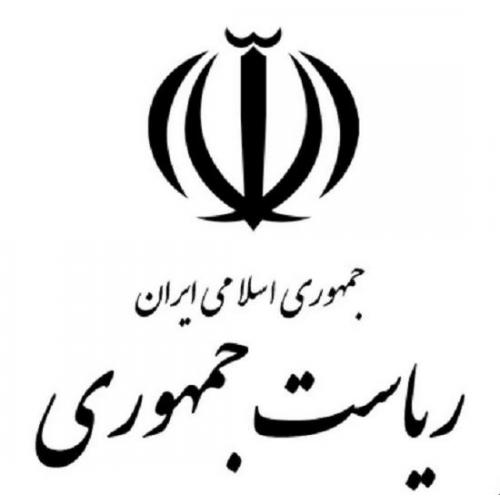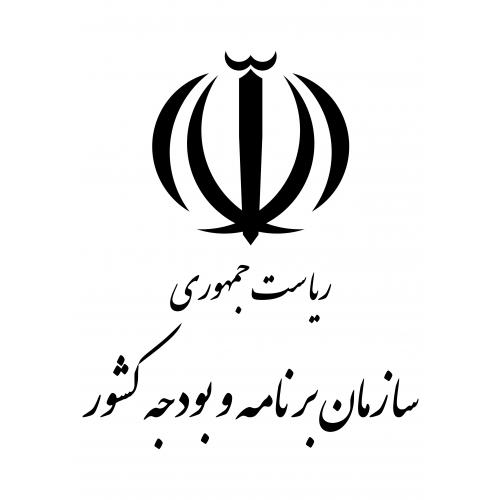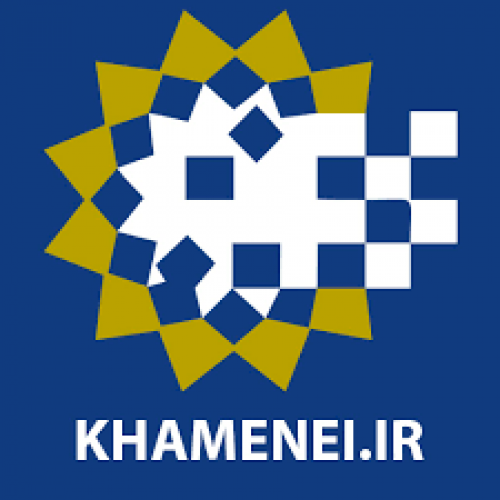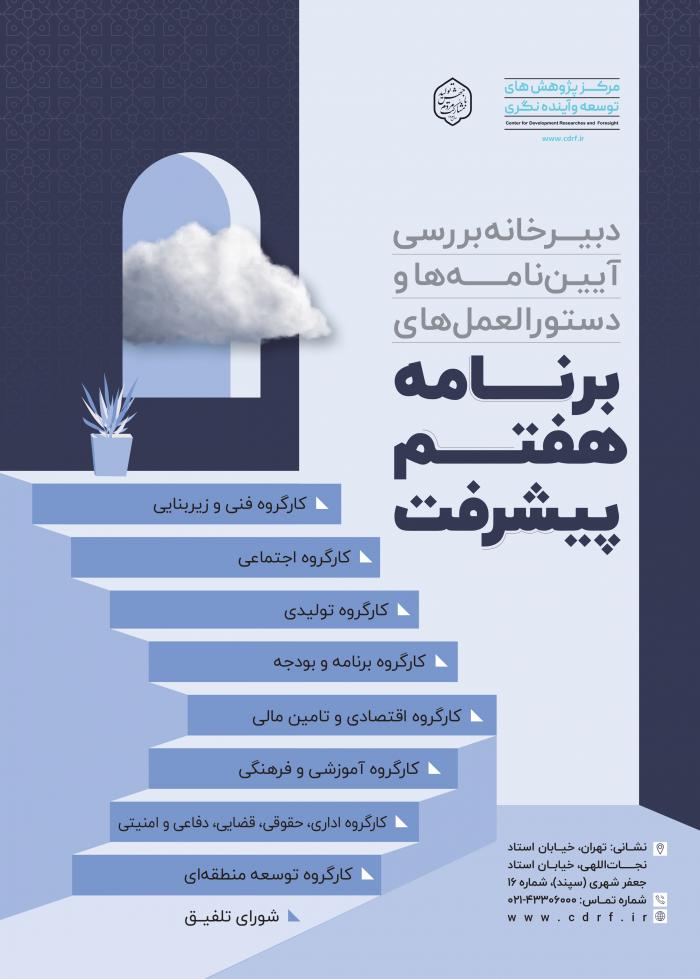
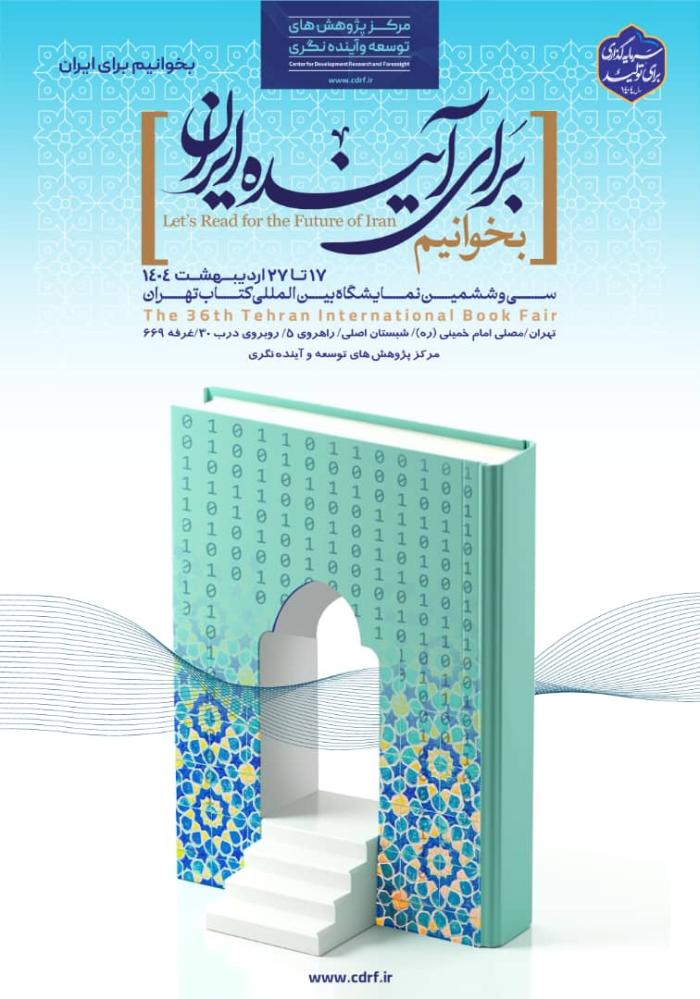
-
بررسی آییننامهها و دستورالعملهای برنامه هفتم پیشرفت
-
بررسی عوامل موثر بر افزایش تصادفات و تلفات جادهای و سوانح رانندگی و دادهکاوی تلفات انسانی
-
سازماندهی و بازآرایی فضایی آموزش عالی کشور
-
به روز رسانی سند ملی آمایش سرزمین
-
انجام مطالعات مناطق آزاد به عنوان نواحی پیشران اقتصادی کشور
-
اصلاح ساختار بودجه و پیاده سازی نظام یکپارچه مدیریت اطلاعات مالی دولت (IFMIS)
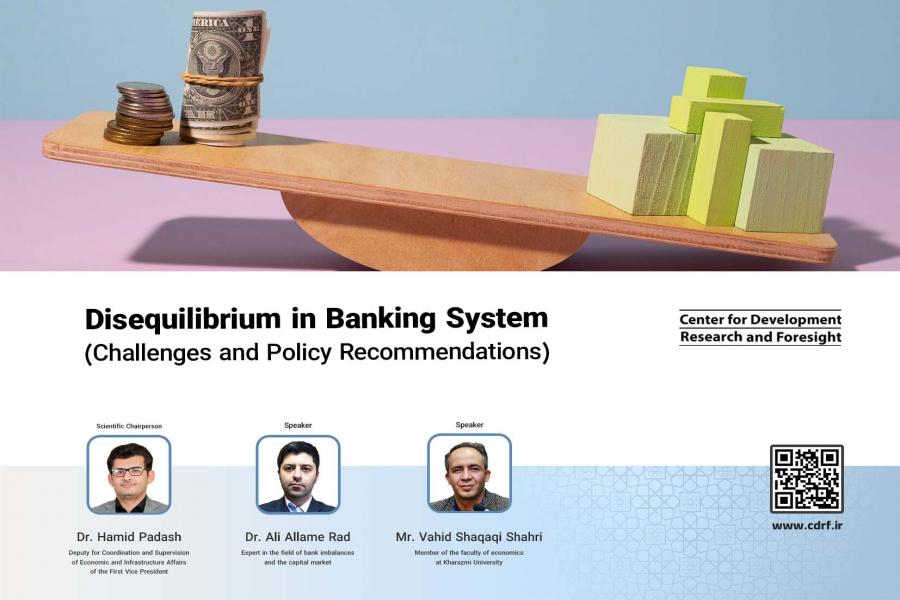
The banking sector's disequilibrium has emerged as a pervasive and enduring challenge within the nation's macroeconomic framework. A series of strategic missteps have plagued the banking sector over the preceding four decades, including: the absence of unified Central Bank oversight from the late 1960s until 1994, despite formal recognition (substantive supervision remained deficient), the premature privatization of the banking industry without adequate national economic preparation, the imposition of government expenditures on private and non-governmental banks, particularly to offset a portion of the budget deficit, the perpetuation of a traditional view of money as a private commodity (a primary factor exacerbating domestic inflation), and vacillation between disparate economic schools, shifting from socialist to capitalist ideologies.
Drawing upon the insights of the scientific chairperson and speakers at the scientific conference titled "Disequilibrium in Banking System: Challenges and Policy Recommendations," the following points and recommendations are proposed:
- Establish a robust legal and judicial framework to effectively address inefficiencies and managerial shortcomings within the banking sector.
- Conduct a comprehensive review of private banking practices, encompassing rigorous oversight, comprehensive training programs, and government support for money creation mechanisms.
- Implement a dual oversight system, subjecting banks to stringent scrutiny from both government and market entities. In this context, banks should maintain transparent loan disclosure practices. Furthermore, in many countries, it is imperative to identify all recipients of government funds and effectively enforce whistleblowing laws.
- Restrict money creation to large banks, ensuring a more controlled and stable monetary environment.
- Exercise caution when considering the elimination of quasi-money, as such a move could potentially deprive the government of essential economic tools and trigger hyperinflationary conditions.
- Adopt the private equity fund method, where a financial institution identifies loss-making enterprises, obtains regulatory approval to establish a private investment fund, solicits contributions from various investors to capitalize the fund, and assumes a central role in fund management. This approach could simultaneously reduce bank debt to the Central Bank while fostering economic growth and production expansion.
- Conduct thorough analyses to evaluate the impact of influential parameters such as an open economy, domestic and foreign interest rates, and the capital return rate within the banking system.
- Segregate the non-Rial and Rial budgets to enhance financial transparency and accountability.
- Implement measures to prevent non-compliant banks from facilitating transactions, safeguarding the integrity of the financial system.
- Amend the country's monetary and banking law to provide a clear and concise definition of a bank and strengthen the independence and authority of the Central Bank, empowering it to effectively address non-compliance issues. Additionally, design a competitive system for banks to promote productivity and efficiency.
- Ensure the accuracy and transparency of the banking system's balance sheet, fostering trust and confidence in the financial sector.
- While acknowledging the need to address past fundamental mistakes, avoid imposing public sector costs on banks and swiftly merge or restructure zombie banks (non-viable entities) to prevent further economic disruption.
- Implement a comprehensive program to unfreeze banking resources, revitalizing the sector and facilitating economic recovery.

